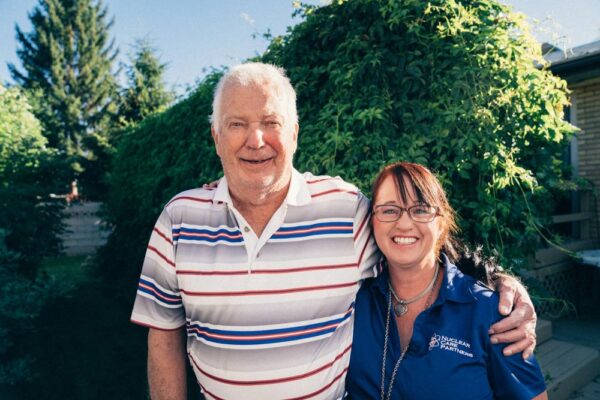A 40-Year Atomic Calling

From Small Town Student to Metallurgical Engineer
Ken Sumpter grew up in upstate New York, only one mile from the Canadian border. “It was a small town. My graduating class had only 180 kids in it, but as a teenager, I had a ball doing nothing and everything,” he reminisced. Ken attended Massena High School and graduated with Regence degree honors. “This was a test like the SAT. I scored high enough to get into 3 universities: Purdue, Ohio State, Notre Dame, and 2 local colleges,” Ken said.
He decided to move to Phoenix, Arizona as college only cost $50 a semester. This is where he met his lovely wife of 60 years, Betty. “We met at a skating rink,” Ken said with a smile. He decided not to attend college until after he and his wife had their first child. When their daughter was a month old, he began attending Phoenix College and received an Associate Degree in General Studies. He furthered his education at the University of Arizona where he later received a Bachelor of Science in Metallurgical Engineering.
Ken began working in the atomic industry after writing a paper in school on control rods. When looking back on the paper he recalled, “It was an interesting metallurgical problem.” He believes that someone from the University of Arizona may have submitted a resume on his behalf, perhaps including his paper on control rods, as Idaho National Laboratory (INL) reached out to recruit him. Ken and Betty then moved to Idaho Falls where he started working at a metallurgical lab at the Engineering Test Reactor at INL. The tasks he performed consisted of examining fuel, cladding, and bonding the plates by hot rolling them. He worked at INL for 5 years, before he and Betty started moving all over the country.
The first stop in their travels was Chicago, Illinois. There Ken worked at a private firm making engine blades out of high-temperature metal. “It was a casting operation. I worked there until it closed its doors,” he said. He and Betty moved, yet again, to Albany, New York where he started working at General Electric (GE). After some time in Albany, GE eventually transferred him to work in Washington state. In total, Ken worked for General Electric for 10 years.
Ken’s next, and final stop was moving back to Idaho where he returned to work at INL. “I did metallurgical things. I built fuel plates,” Ken stated. Later, he held a supervisory position where he had oversight of 20 engineers and 20 technicians. One moment that Ken remembers vividly is “when I took an ATR fuel element apart by hand, which was ‘strictly forbidden’. The end result was a bunch of parts laying around. And then a strong scolding!”
Ken retired from INL in 1995 after 40 years of service. In the duration of his work at INL, Ken had been exposed to asbestos, all forms of cleaning compounds, and non-radiated fuel. Ken knew he was potentially going to be exposed when entering into a radiation zone. “They told me about it,” he said. “You are supposed to understand the radiation involved, where it comes from, and what the possible outcomes would be. There were signs posted around, it wasn’t like they were derelict in their duties.”
Ken now suffers from normal pressure hydrocephalus (NPH), neuropathy, asbestosis, and pleurisy as a result of the exposure he received at INL. “My doctor ‘pinpointed it all’ during the annual medical assessment completed after I retired,” he said.
Fortunately, Ken saw an article about the EEOICPA in the newspaper and became involved with the program. He connected with Nuclear Care Partners, who guided him through the process of filing for and receiving benefits through the EEOICPA.
Ken has been working with Nuclear Care Partners since it first started serving patients in Idaho, and has had a wonderful experience. He states that he loves his nurses and that “they’ve done a really great job”. His wife, Betty, chimed in “They’re wonderful. They help us and answer all of our questions—we feel so lucky to have them.”
Ken and Betty remain in Idaho Falls where they continue to live the life they want to live with the help and support of Nuclear Care Partners.


